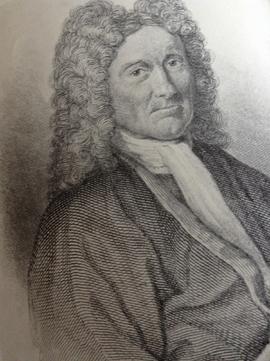Showing 644 results
People & Organisations- Person
- ?-1979
Betty Sherriff nee Graham was born at the turn of the century in British India in the Himalayan foothills. She was the youngest daughter of a Scottish vicar and missionary. Dr. John Anderson Graham, who had founded the St. Andrew's Colonial Homes (now the Kalimpong Homes) on behalf of needy Indian children. She had previously been married and had a degree in Botany from Oxford.
Sources: Lost in Tibet: The Untold Story of Five American Airmen, a Doomed Plane, and the Will to Survive by Richard Starks and Miriam Murcutt
Primula by John Richards
- GB/NNAF/P137301
- Person
- 1898-1967
George Sherriff attended the Royal Military Academy, Woolwich and fought in the First World War in France in 1918, where he was gassed. In 1919 he was sent to India and served on the north-west frontier. In 1927 he was appointed British vice-consul in Kashgar, Chinese Turkestan and while there travelled widely. In 1929 he met Frank Ludlow and their shared interests in ornithology, travel and plants started a lifelong friendship. During the 1930s they went on a series of plant and bird collecting expeditions working eastward along the main Himalayan ranges. In 1933, for example, they travelled to Tibet, Nang-kartse, Gyantse and back to India making 500 gatherings of plants and seeds; their collections included 69 species of rhododendron, 15 new to science. Sherriff resumed his military service during the Second World War, first in Assam and later in Sikkim and in 1943 he succeeded Frank Ludlow in charge of British Mission in Lhasa. After the war he continued collecting in south east Tibet, again with Ludlow. In 1949 both retired from India and went a final expedition to Bhutan to gather alpine and temperate flora. George Sherriff funded virtually all his expeditions himself and, as well as collecting, took thousands of photographs. He was one of first plant collectors to send specimens in crates back by air to Kew, Edinburgh and Wisley and his best plant introductions were rhododendrons, primulas, and peonies. On retirement Sherriff bought an estate near Kirriemuir in Angus where he grew many Himalayan plants with great success. In his later years he served in the Home Guard, on the county council and as session clerk of his local church.
Sources: Dictionary of National Biography; R. Desmond ‘Dictionary of British and Irish Botanists and Horticulturalists; obituary folder; H.R. Fletcher ‘A Quest for Flowers’.
D.W.
- Q360689
- Person
- 1641-1722
Born Edinburgh 1641; died Edinburgh 1722
Robert Sibbald was educated in Cupar, at Edinburgh High School, and at the university there when he was awarded an MA in 1659. From 1660 to 1661 he studied anatomy and surgery and botany and chemistry at Leiden before moving to Paris and then Angers where he graduated MD in 1661. Returning to Edinburgh to practise as a doctor he was appalled at the state of medicine in the city and initially established a private garden to cultivate medicinal herbs. In 1670, with his friend and distant cousin Andrew Balfour, he leased a small plot belonging to Holyroodhouse at St. Anne’s Yards to assemble a collection of between 800 and 900 plants. This, together with a second (physic) garden at the Trinity Hospital acquired 6 years later, became a major site for plants of use in material medica and a teaching resource for medical students. Sibbald was a joint founder of a medical virtuoso club which in 1681 became the Royal College of Physicians of Edinburgh. He was knighted in 1682, appointed physician in ordinary to Charles II and made geographer royal for Scotland. In 1684 he produced a ‘Pharmacopeia Edinburgensis’ and the following year he became the first professor of medicine at Edinburgh University. However hostility to his conversion to Catholicism (which he later renounced) meant he had to flee temporarily to London. On his return to Edinburgh he developed a deepening interest in natural history, geography and antiquarianism and from 1682 became involved in compiling information from a range of sources on the geography and natural history of Scotland, resulting in the publication of ‘Scotia Illustrata’ in 1684, with a second edition in 1696. Drawing on his various interests, Sibbald contributed to early Enlightenment discourses on the economic potential of the nation. As a physician he explored the efficacy of botanical cures by extracted from Scottish plant life and his botanical work was admired by Linnaeus who named the genus Sibbaldia in his honour.
Sources: Dictionary of National Biography; HR Fletcher and WH Brown ‘The Royal Botanic Garden Edinburgh 1670-1970’; Deni Bown, ‘4 Gardens in One’; (R. Desmond ‘Dictionary of British and Irish Botanists and Horticulturalists).
D.W.
- GB/NNAF/P148690
- Person
- 1913-1968
born at Bu of Hoy, Orkney on 29th November 1913, and died at Kirkwall, Orkney, 15th February 1968, James Sinclair obtained a BSc at Edinburgh University in 1936, became a teacher on Orkney where he also studied algae. He worked as a botanist at the Royal Botanic Garden Edinburgh between 1946 and 1948, moving to become Curator of the Herbarium of the Botanic Gardens in Singapore between 1948 and 1963. He collected plants in Malaya, Borneo, Indonesia and the Philippines.

